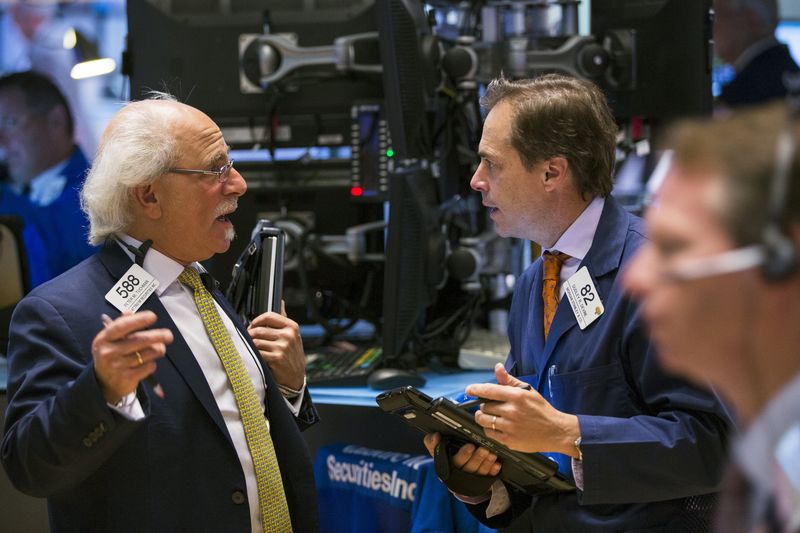Investing.com - After a busy week dominated by market-moving U.S. tax reform and political developments, investors will get back to focusing on economic data, with Friday's employment report likely to garner the most attention.
Meanwhile, market participants will be looking ahead to monthly trade figures out of China amid recent signs that momentum in the world's second largest economy is slowing.
Elsewhere, in the UK, investors will focus on a report on activity in the dominant services sector for further indications on the continued effect that the Brexit decision is having on the economy.
Monetary policy announcements from the Bank of Canada and the Reserve Bank of Australia will also be in focus.
Ahead of the coming week, Investing.com has compiled a list of the five biggest events on the economic calendar that are most likely to affect the markets.
1. U.S. Employment Report
The U.S. Labor Department will release its November nonfarm payrolls report at 8:30AM ET (1330GMT) on Friday, and it will be watched more for what it says about wages than hiring.
The consensus forecast is that the data will show jobs growth of 198,000, after adding 261,000 positions in October, while the unemployment rate is forecast to hold steady at 4.1%.
Most of the focus will likely be on average hourly earnings figures, which are expected to rise 0.3%, following a flat reading a month earlier. On an annualized basis, wages are forecast to gain 2.7%, improving from 2.4% in October, which was the weakest rise in a year-and-a-half.
A pickup in wages could be an early sign for higher inflation, supporting the case for higher interest rates in the months ahead.
This week's calendar also features the ADP private sector nonfarm payrolls report, the ISM non-manufacturing survey, as well as preliminary Michigan consumer sentiment data.
The Federal Reserve is scheduled to hold its final policy meeting of the year on Dec. 12-13, with interest rate futures pricing in a 100% chance of a rate hike at that meeting, according to Investing.com's Fed Rate Monitor Tool. However, markets appeared doubtful over the central bank's ability to raise rates as much as it would like next year due to concern over the sluggish inflation outlook.
Tax reform legislation will remain on the agenda, as Congress works to push through a bill that could give President Donald Trump his first major legislative accomplishment of his presidency.
Friday's deadline on a possible government shutdown will also be on investors' minds.
Market players will also be on the lookout for more headlines about the Russia probe, now that Michael Flynn, former national security advisor, pleaded guilty to lying to the FBI and agreed to cooperate with investigators.
2. China Trade Figures
China is to release November trade figures at around 0300GMT on Friday. The report is expected to show that the country’s trade surplus ballooned to $39.5 billion last month from a surplus of around $38.2 billion in October.
Exports are forecast to have climbed 7.2% from a year earlier, following a gain of 6.9% a month ago, while imports are expected to rise 12.0%, after increasing 17.2% in October.
A Chinese slowdown is one of the major risks to continued global growth, so a major change in this data could cause some concerns.
Additionally, on Saturday, the Asian nation will publish data on November consumer and producer price inflation. The reports are expected to show that consumer prices rose 1.8% last month, while producer prices are forecast to increase by 6.6%.
Soft PMI data on manufacturing and non-manufacturing activity last week indicated the Chinese economy is slowing going into the fourth quarter of the year.
3. UK Services PMI
A survey on Britain's giant services sector due at 0930GMT (4:30AM ET) on Tuesday is forecast to dip to 55.0 from the previous month's reading of 55.6.
Politics is also likely to be in focus, especially with the Brexit negotiations entering a key phase. British Prime Minister Theresa May is due to meet European Commission President Jean-Claude Juncker and his chief Brexit negotiator, Michel Barnier, in Brussels on Monday.
If Monday's meeting is deemed by Brussels to have produced sufficient progress, then European Union (EU) leaders could give a green light to trade talks at a summit on Dec. 14-15, reducing the risk of a "hard Brexit".
The Bank of England raised interest rates for the first time in more than ten years last month, but said it sees only gradual rises ahead as Britain prepares to leave the EU.
4. Bank of Canada Rate Decision
The Bank of Canada's interest rate decision is due at 10:00AM ET (1500GMT) on Wednesday, with most experts expecting the central bank to hold its benchmark rate at 1.0%.
The BOC held interest rates steady at its previous meeting in October and said that while less stimulus will be required over time the bank will be cautious as it considers future moves given the risks and uncertainties facing the economy.
Market experts believe the Canadian central bank will stand pat on interest rates until April, held back by the uncertainty over how highly indebted consumers will handle increasing borrowing costs and the unknown fate of the North American Free Trade Agreement (NAFTA).
5. Reserve Bank of Australia Policy Meeting
The RBA's latest interest rate decision is due on Tuesday at 0330GMT.
Most economists expect the central bank to keep rates unchanged at the current record-low of 1.5% for the 15th straight meeting and maintain its neutral policy stance, as it balances the risk of fueling further borrowing in the country's red-hot property market against tepid inflation.
Besides the RBA, data on third-quarter economic growth, retail sales and the trade balance should also capture some attention.
Stay up-to-date on all of this week's economic events by visiting: http://www.investing.com/economic-calendar/
